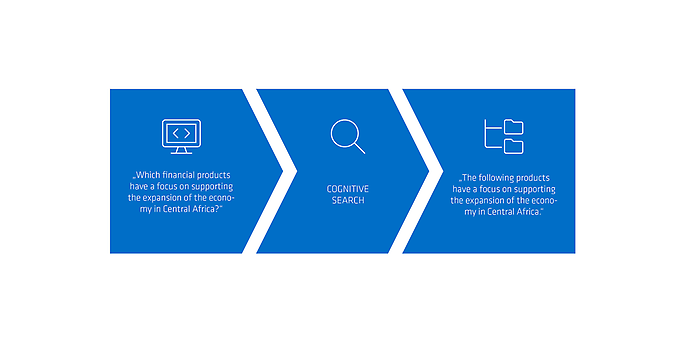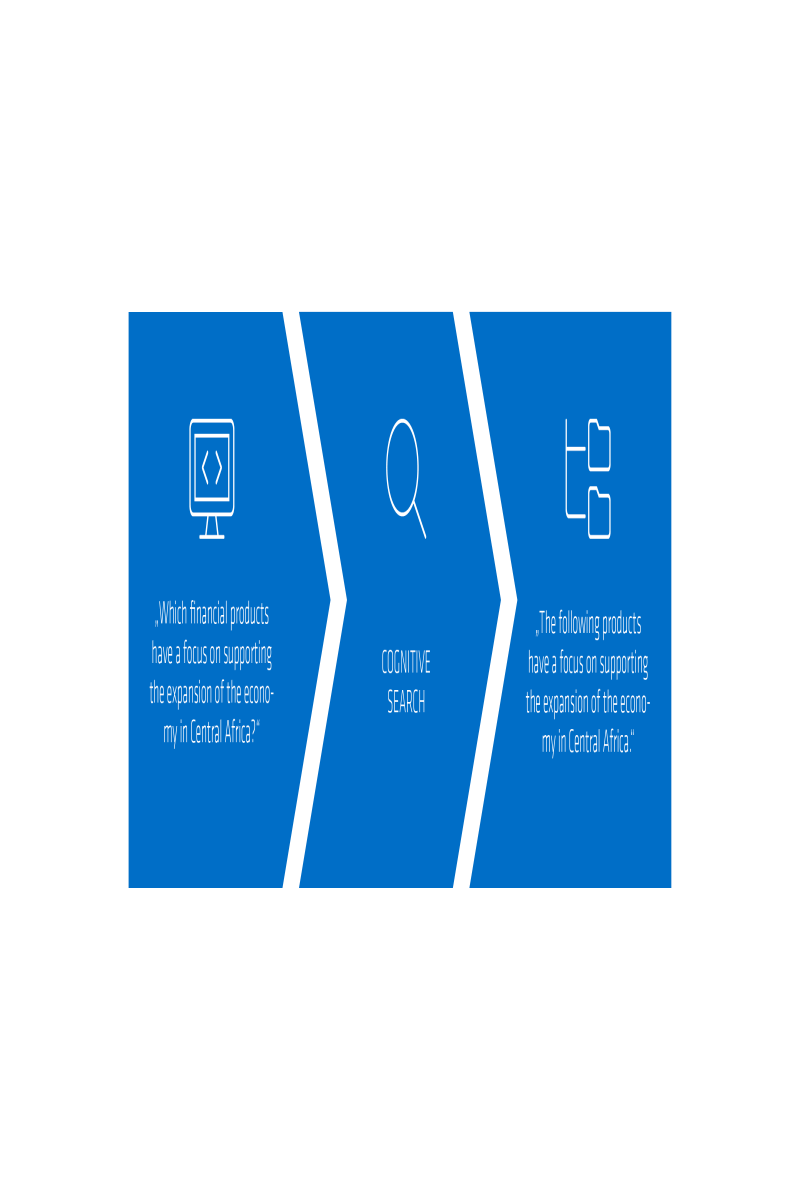7. July 2022 By Tim König
Cognitive search – finding instead of searching
Data is the new gold of the digital age. At this point in the Information Age, people need to
process information and data from the widest variety of sources. What proves to be no easy task for private individuals also poses great challenges for companies.
Since the beginning of the cognitive computing era, a new generation of search engine software has been forming that additionally integrates AI technologies, such as machine learning. It makes it possible to include, understand and organise knowledge from multiple data sources. At the same time, both structured (databases) and unstructured (things such as e-mails and text documents) information is able to be accessed. The goal is to provide users with content, answers and insights from a large information ecosystem in a personalised way. Cognitive search goes beyond traditional search engine technologies and significantly broadens the approach. It differs from previous search engines in that it combines artificial intelligence technologies, such as NLP and machine learning algorithms, to get a better understanding of the sources of information. By connecting the different technologies and exchanging information with the users, only the information needed for the respective context is displayed. At the same time, the system learns from its various interactions with users in order to present better and more precise suggestions for future queries.
NLP is used to analyse the meaning of unstructured data, from texts, such as e-mails, documents and market research data, to videos and recordings. The goal of the machine learning algorithms is to continuously improve the relevance of the results.
A valuable tool
By using cognitive search to independently analyse large and complex data sets, the user gains deep insights into data, which subsequently leads to informed business decisions. Centralising the search function and standardising the data tools mean that companies can streamline their business processes. Furthermore, the need to use multiple apps and programmes is eliminated, which makes it possible to organise working time more efficiently and thus yield higher productivity. This means that users can use a single search slot to perform a natural language search across multiple systems and then only get the information that is relevant to them. Thinking about which information is stored in which system becomes a thing of the past, and the workflow is massively streamlined. This allows users to concentrate on their core tasks and thus achieve better results more quickly. By using various language comprehension models, the users are able to make a natural language query and the machine draws on every source of knowledge to generate an answer that it can also justify.

According to experts, the more efficient use of time and the increase in productivity also promote employee retention. Personalised suggestions created with the help of machine learning algorithms enable every employee to find work-related data and information more quickly. In doing so, the versatility of the new search technology ensures a better employee experience. As a result, employees are more likely to use these tools consistently in future because of the improved search experience.
The increase in productivity lowers a company’s operating costs, as less time and resources are needed to gather information and find the knowledge they’re after, which is particularly advantageous for industries that work with large and distributed data sets.
This makes it possible to create a search that’s tailored to the user and make direct as well as highly complex queries, which are understood by the machine and transformed into queries that are sent to the data sources. Answers are then immediately generated and justified based on the information. This approach ensures trust, usability and a massive improvement in knowledge management within a company.
We see cognitive search as the evolution of this era, as the diversity of innovation it entails will help companies to evaluate complex content from structured and unstructured data faster, more efficiently and in significantly higher quality. Employees will also see more relevant search results tailored to their individual areas of interest, which will significantly facilitate work processes and thus lead to cost savings in the company’s information ecosystem.
You will find more exciting topics from the adesso world in our latest blog posts.


